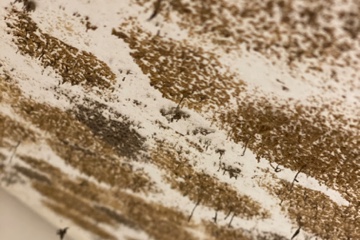

As dramatic as it may sound, it can certainly be a heart-lurching moment to round a corner or look up and be met with the looming presence of an otherwise dark and misshapen figure.
And no, we’re not talking about pranks or horror movies — we’re talking about the equally-dreaded villain that is mold.
But as you edge closer with a keen eye and attempt to discern the new dark spot on your wall, ceiling, or even your furniture, you may find yourself wondering: Is it mold? And if it’s not mold, what is it?
Dirt and Stains vs. Mold: Different Characteristics
The first way to identify whether or not you may have a mold problem at hand is to use your senses, most specifically those of smell and sight.
For example, where dirt and stains are likely to have streaky, dry, or even dusty patterns and characteristics, mold is more likely to appear as “distinctly colored woolly mats,” as detailed by the Occupational Safety and Health Administration (OSHA).
Otherwise, the appearance of rounded spores is an indication you’re dealing with mold, whereas noticing such questionable patterns in a well-lit area may point more in the direction of dirt or staining.
Mold also has a more damp, mildewy, or even foul odor. And while water stains could potentially smell odd, (or even lead to mold growth), dirt is less likely to be as pungent, if it even smells at all.
Dirt and Stains vs. Mold: Different Environments
“Molds can be found almost anywhere; they can grow on virtually any substance,” according to the Environment Protection Agency (EPA). “There are molds that can grow on wood, paper, carpet, and foods.”
The question, then, is what renders a space or material more liable to grow mold?
The answer: Moisture.
“When mold spores drop on places where there is excessive moisture, such as where leakage may have occurred in roofs, pipes, walls, plant pots, or where there has been flooding, they will grow,” the Centers for Disease Control (CDC) explains on its website.
So if you’re investigating an area that appears otherwise devoid of high moisture or humidity, you may be looking at a cleaning project as opposed to a hazardous mold situation.
Knowing When To Call For Help
Let’s face it: Sometimes it can just be too difficult to tell.
Perhaps you’re dealing with an area that is dark but dry, or an area that is moist but odorless. In any case, it’s not uncommon for one’s senses to get confused, leaving you asking more questions now than when you first started.
That’s when it’s time to call your local indoor environmental experts, Luce Air Quality.
Our team performs expert on-site mold inspections, including comprehensive testing, a same-day report of our findings, and recommendations of trusted solutions that will help you navigate the next steps.
We have over 11 years worth of experience in the restoration and remediation industry, so don’t wait! Contact our team today by calling (904) 803-1014 today to schedule a mold investigation.


